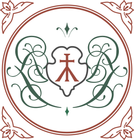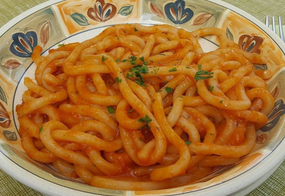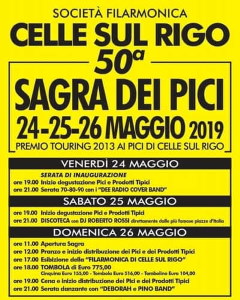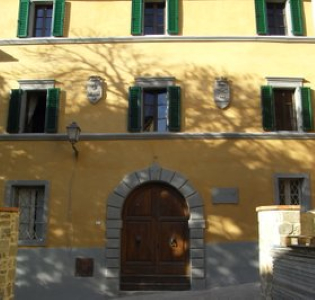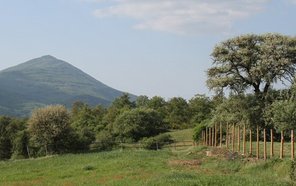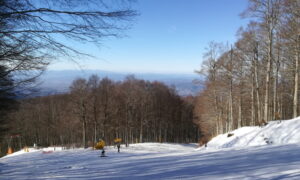Celle sul Rigo and Southern Tuscany
Visiting the village of Celle sul Rigo
The small southern Tuscany city of Celle sul Rigo is where our winery is located and our Vino Etrusco sul Rigo wine is produced. The town is located in the municipality of San Casciano dei Bagni and is a picturesque town on the top of a beautiful hilltop.
The name of the city of Celle sul Rigo originates from the river Rigo which passes by and from the many cellars “Celle” which are dug down into the hill below the city. Celle sul Rigo has only 600 inhabitants, but still several restaurants, bakeries, grocery stores, butchers and of course a few bars. From Celle sul Rigo there are approx. 1.5 hours drive to Florence or to Rome and approx. one hour drive to Siena.
We want others to explore this beautiful part of Tuscany and are giving our own recommendations for what to see, where to stay and where to eat.
Che Cerca Trova is the rental agency and tour operator in Celle sul Rigo. The owner Rita Gori is very service-minded and helpful and can arrange rental of great located houses in the area around Celle sul Rigo.
One of the houses we recommend is Macetona, which lies just outside Celle sul Rigo. Macetona has apartments of different sizes and a pool overlooking the fantastic Tuscan landscape.
Contact:
Web: www.chicercatrovavacanze.com
Email: info@chicercatrovavacanze.com
Phone: +39 (0) 578 53729
Mobile: +39 335 839 0396
Address: Via Giosue Carducci 8, 53040 Celle sul Rigo, Siena
You should not visit Celle sul Rigo without tasting the local Pici. Pici is hand-rolled pasta served at all three restaurants in the city. We recommend tasting the Pici Picante which is Pici in a spicy tomato sauce.
If you are a lover of high-end food and excellent wine you must visit the one-star Michelin restaurant at Castello di Fighine. The restaurant is located in one of the buildings inside the castle and creates fantastic dishes at the hand of chef Antonio Romano. They cooperate with the three-starred Michelin chef Heinz Beck which brings the menus to a very high level.
Link: Castello di Fighine
If you are a cheese lover we highly recommend buying the local cheese. Visit the small supermarket Rita Gori Tabacchi Alimentari at Via Roma where the owner Dino makes his own cheese. Ask Dino for his own cheese and he will find it for you. It’s a hard dry cheese that is perfect for the local Pici pasta.
The same cheeses are used at an event every year when the different parts of the town compete in being able to roll the cheese the longest distance.
The history of Celle sul Rigo
Celle sul Rigo is a very old village. The oldest existing houses in the city are from the 13th century, but around the village, there have been found remains from the Etruscans. On a hilltop near Celle sul Rigo there is an Etruscan burial site that has been excavated a few years ago. Etruscans lived in the area from around 600 BC until about year 0, when the Romans took over power of the area. Recently remains have been found from an old Roman settlement, so something suggests that the city has been inhabited by Romans, then abandoned for hundreds of years, like the much larger Etruscan town of Orvieto a little further south.
The first written testimony of Celle sul Rigo dates back to about 1000, when a document certifies that the city belonged to Orvieto. In the Middle Ages, Celle sul Rigo was laying at the border between the Vatican state in Rome and the state of Siena and Florence in what is today Tuscany. Celle sul Rigo is located close to the ancient Roman road Via Cassia, which for hundreds of years connected the western part of the Roman Empire with Rome. Recently, the Italian state has reopened another historic road, the pilgrimage route Francigena, which has led many pilgrims from Northern Europe to Rome. The nearby city of Radiocofani was one of the major “resting places” on this pilgrimage route, but also Celle sul Rigo has been visited by pilgrims. With the reopening of the pilgrimage route, it has been possible to go all the way from the Alps to Rome.
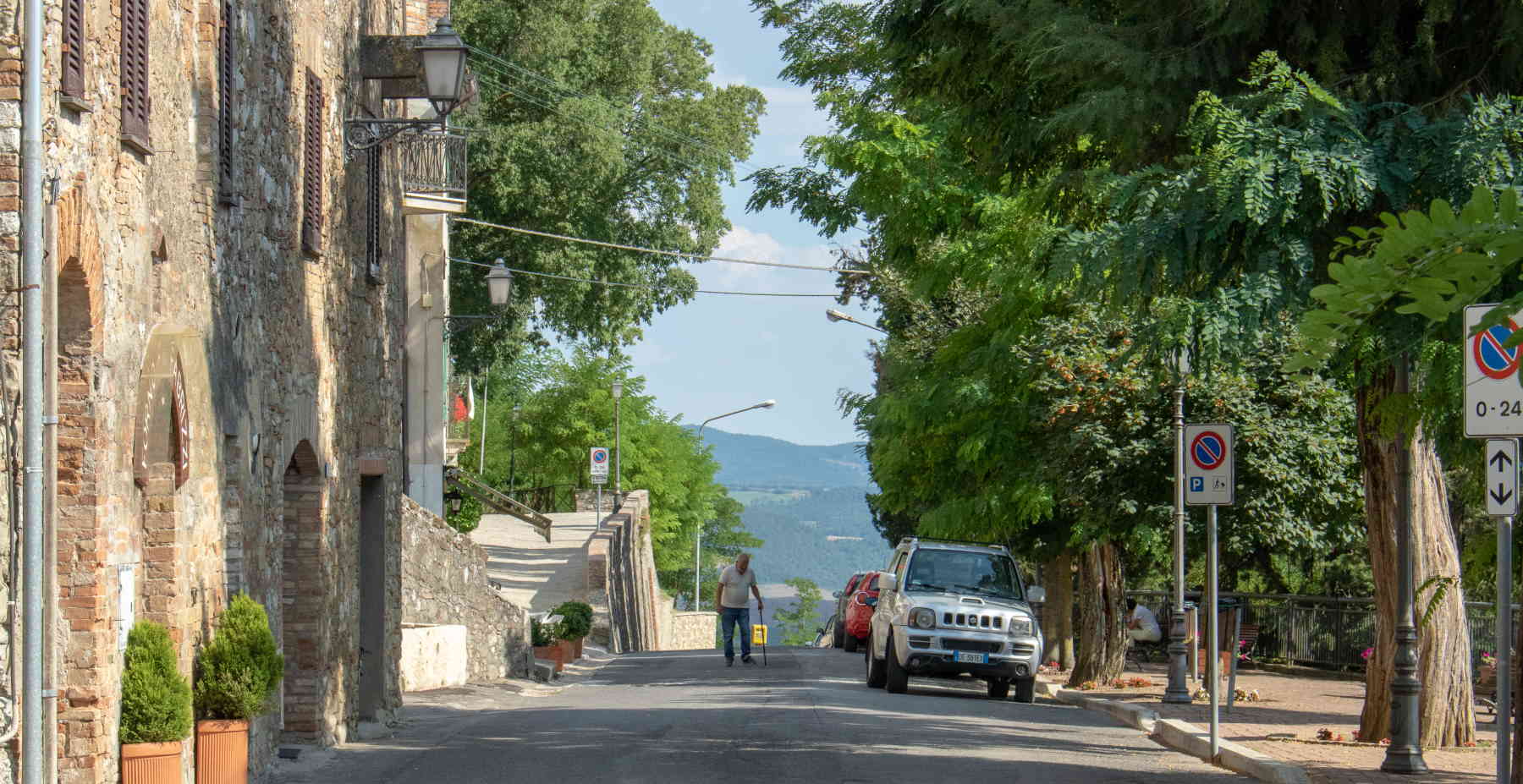
Celle sul Rigo, although people have moved to the big cities to work, is still a very vibrant little town.
Every village in Tuscany has its own city party (Sagra) and it is said that you can travel from north to south and participate in a new city party every evening.
Celle sul Rigo’s event is held every year at the last weekend in May. In the weeks up to the party, the city’s women make Pici, which is finger-rolled pasta. This is then sold during the party, of which over 5,000 people are being eaten during the weekend. Pici is the city’s food speciality and is wonderfully saturated. In ancient times this was food for poor people, whereas today it has become a little expensive speciality. During the city party, there is entertainment on the square and the city’s own orchestra also plays several times during the weekend.
As with most other ancient cities in Tuscany, Celle sul Rigo was strongly strengthened to resist external attacks. In the 1300s, the city had a high city wall and many towers. When you are in Celle sul Rigo today it is still easy to see where the city wall has been, but only a few parts of the original city wall are left. Wars and earthquakes have also changed the city’s appearance.
Today, the square stands as an open space overlooking the surrounding landscape. In the Middle Ages, this place was surrounded by houses on all sides, but an earthquake in the 1950 got the outer houses to collapse.
One of the remainings from the old-time is the clock tower of Celle which is overlooking the entire city and the surrounding area. The view from the tower is fantastic and a must to visit. The tower opens once a week and you can ask at the café when the tower is open next time.
Celle sul Rigo has also had her ruler family. Bocci-Bianchi’s fine palace can be found in Via del Teatro.
Today the palace is privately owned by another family. The Count’s brother built an even bigger palace right next door, and if you are very lucky you can come in and see the family’s own church and the huge wine cellars – once the area’s largest. The wine cellars are not used anymore but are still full of huge wine barrels and other very old winemaking equipment.
In recent years, the palace and many other houses in Celle sul Rigo has been renovated by its inhabitants. The city appears as a very beautiful medieval city in Tuscany’s typical terracotta colours.
Exploring Southern Tuscany
Everyone knows the amazing and exciting cities of Florence, Siena, and Pisa in Tuscany. Common to the cities is that they are located in the northern part of Tuscany and that they are visited by many tourists – understandably as it is lovely towns. But Tuscany has a lot more to offer than Florence, Siena, and Pisa.
Tuscany is for people who like the sun, warmth, culture, amazing scenery, good food, and great wines. If you want to experience all that without queueing up with a lot of other tourists, then a visit to southern Tuscany is definitely recommended. Southern Tuscany is part of ancient Tuscia which also covers northern Lazio and western Umbria. The area is immersed in unspoiled little mountain towns, where you can experience the true Italian culture and meet lovely people.

Vulci was one of the oldest and largest Etruscan cities in Tuscia. Like with Pompeii near Naples, Vulci has disappeared – not buried in lava but of the tidings of time. Vulci was a huge city with city walls, a river port, and temples. Today only a very small part of Vulci is excavated but you get an impression of the size when you see the overview maps that are set up in the welcoming area. You can walk around the old ruins of villas and see their size and even visit intact basements below the villas.
We recommend first visiting the city to look at the archaeological excavations. Then follow the river until it reveals the most beautiful lake with a beach and a beautiful waterfall.
Not far from Vulci there is an old castle that houses a private Etruscan museum. The castle originally protected the bridge that crosses the river. The bridge is still functioning, about 2500 years old and was built by the Etruscans.
Link: Vulci
There are many possibilities for hiking in the area. If you are to heights then we recommend climbing Monte Cetona (1145 meters). At the tourist office in Cetona, you can get a special trekking map, which indicates altitudes and recommended trails.
A good route is to drive by car to Fonte Vetriana, located on a side road between Radicofani and Sarteano. From Fonte Vetriana you can drive a little further on a very poor gravel road, but it is not recommended to drive too far unless you have a good 4WD. Park the car and follow the trail approx. 2 km. up to the top of Monte Cetona. It’s a fantastic but tough trip. Remember water, as absolutely nothing can be bought on the trip.
Link: Monte Cetona
West of Bolsena is a very old town located on the top of a hill. The special thing about the city is that it slowly disappears because the tuf-rock it is built on crumbles. The city has no cars as they simply can not get there! The city can only be reached by crossing a long steep bridge. During the times the city has been dangerous to live in as many houses are in danger of falling over the cliff.
Modern foundations have been made so the city is no longer at risk of disappearing 🙂
Link: Civita di Bagnoregio
There are not many who knows it, but in the centre of Tuscany and only 30 minutes drive from Celle sul Rigo lies the volcano Monte Amiata. The volcano is today over 1700 meters high and is clearly visible from Celle sul Rigo. The area is perfect for a summer hike, a mushroom tour in the fall and a skiing trip in the winter. The volcano is so high that in winter several meters of snowfall, and there is, therefore, a whole ski resort in “Alpen style” on the top of the mountain. We have been to Monte Aminiata in April and despite the fact that there were 20 degrees in Celle sul Rigo, there were 4 meters of snow on top of Monte Amiata.
Monte Amiata mountain has been used for the mining of mercury and there are some large but now abandoned mines. Mercury recovery has influenced the health of the population, especially in the city of Abbadia San Salvatori.
In the landscape around Monte Amiata, you can still see that it is an active volcanic area as there is steam vapour in the air from the geothermal power plants.
Link: Monte Amiata
Parco Archeominerario de San Silvestro is an hour’s drive by car from Celle sul Rigo in the coastal area of Piombino. It’s a great place to visit on a day trip with kids. The area has been used for mining for over 2000 years and there are still ongoing mines in the area.
The excitement of the place is, besides exploring the old mines, and how old-age ore was used, the opportunity to drive into the mine in an old mining train. The train takes us to the other side of a mountain, and the old abandoned town of Rocca San Silvestro appeared on a mountain top. Hiking and climbing the mountain up to the old town. The city was founded about 1000 years ago when copper and silver were found in the area and it was later abandoned due to the economic slowdown.
The abandoned city provides a good insight into how and how close the old miners lived 1000 years ago.
It takes a few hours to drive to San Silvestro from Celle sul Rigo.
Link: San Silvestro
When visiting Celle sul Rigo, do not miss a trip to the public thermal baths in the neighbouring city San Casiano dei Bagni. These are said to originate from the Romans and have been maintained ever since. They consist of three stone basins with a flow of approx. 40 degrees hot mineral-rich water from a nearby source. The baths can be visited all year round, and it is a quite special experience to sit in the 40-degree warm water.
These thermal baths are public. They are at the foot of the rock where the old city of San Casiano dei Bagni is located. You are not allowed to park at the baths but there is a good parking area on the way down to the baths. Apart from a few benches, there are no facilities around these thermal baths, but the charm is absolutely present and they are free and open to visitors all year round.
The last years ago a huge temple for Apollo was excavated right beside the baths. It is expected the baths have been a part of this temple complex in ancient times. In the town hall of San Casciano dei Bagni the finds from the excavation are on display.
Link: Roman terme
